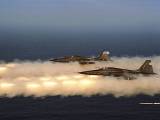 |
| Length: | 3.4 ft (1.04 m) |
|---|---|
| Diameter: | 2.75 in (70 mm) |
| Wingspan: | 7 in (186 mm) |
| Weight: | 14.5 lbs (6.6 kg) |
| Warhead: | varies |
| Guidance: | None |
| Range: | 12,000 feet (3.6 Km) |
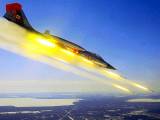 The CRV-7
Rocket Motor was designed and developed by the Canadian Forces in Valcartier, Québec,
Canada and is now being nanufactured by Bristol Aerospace Limited. The first one to be
produced in 1973, the RLU-5001/B (C-14) produced quite a bit of smoke due to the aluminium
fuel in the propellant composition (as seen by the two pictures above). For that reason
they were not suitable to be fired from slow moving aircraft or helicopters as they could
be easily spotted.
The CRV-7
Rocket Motor was designed and developed by the Canadian Forces in Valcartier, Québec,
Canada and is now being nanufactured by Bristol Aerospace Limited. The first one to be
produced in 1973, the RLU-5001/B (C-14) produced quite a bit of smoke due to the aluminium
fuel in the propellant composition (as seen by the two pictures above). For that reason
they were not suitable to be fired from slow moving aircraft or helicopters as they could
be easily spotted.
The smoke problem brought on the development of the RLU-5002/B (C-15) rocket motor which was very similar except that it did not produce the vast amount of smoke.
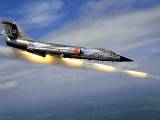 The latest rocket in
service in the Canadian Forces is the RLU-5002A/B (HEPI) which main difference is that the
igniter assembly (device that ignites the rocket motor propellant) was removed from the
nozzle throat and moved forward to the head-end of the rocket motor, thus HEPI (Head-End
Permanent Igniter). What brought on this modification is that the igniter assembly used to
be in the nozzle and was ejected the rear of the rocket and would strike the aircraft and
cause slight damage. Now the igniter assembly is permanently mounted to the head-end of
the rocket motor and any part which might break off is consumed by the combustion before
exiting the nozzle.
The latest rocket in
service in the Canadian Forces is the RLU-5002A/B (HEPI) which main difference is that the
igniter assembly (device that ignites the rocket motor propellant) was removed from the
nozzle throat and moved forward to the head-end of the rocket motor, thus HEPI (Head-End
Permanent Igniter). What brought on this modification is that the igniter assembly used to
be in the nozzle and was ejected the rear of the rocket and would strike the aircraft and
cause slight damage. Now the igniter assembly is permanently mounted to the head-end of
the rocket motor and any part which might break off is consumed by the combustion before
exiting the nozzle.
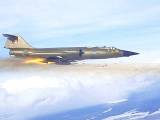 The CRV-7
having a higher velocity and kinetic energy than other 2.75 in rockets has enable the
development of new types of rockets not before associated with 70 mm rockets, such as the
FAT warhead. FAT stands for Flechette Anti-Tank. The FAT warhead was developped from
firing practice warhead at ship used for targets. The practice warhead used is an outer
casing made of nylon/plastic and housing a large and flat-ended metal rod. When they would
fire at the ships they found out that because of the high kenetic energy of the rocket
motor, the plastic casing would shatter and the rod, even though blunt, would go through
the deck of the ship they fired at. Seeing this, they studied the facts and created a
rocket warhead specifically designed for the CRV-7 which incorporated 5 tungsten
reinforced steel dart/flechettes that can penetrate the armour of the most modern tanks.
The CRV-7
having a higher velocity and kinetic energy than other 2.75 in rockets has enable the
development of new types of rockets not before associated with 70 mm rockets, such as the
FAT warhead. FAT stands for Flechette Anti-Tank. The FAT warhead was developped from
firing practice warhead at ship used for targets. The practice warhead used is an outer
casing made of nylon/plastic and housing a large and flat-ended metal rod. When they would
fire at the ships they found out that because of the high kenetic energy of the rocket
motor, the plastic casing would shatter and the rod, even though blunt, would go through
the deck of the ship they fired at. Seeing this, they studied the facts and created a
rocket warhead specifically designed for the CRV-7 which incorporated 5 tungsten
reinforced steel dart/flechettes that can penetrate the armour of the most modern tanks.
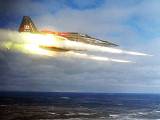 The CRV-7 looks
similar to the MK 4 and MK 40 rockets but the trajectory is flatter, range is greater and
impact energy is three times as high. Accuracy is improved by the fact that a high rate of
rotation is imparted in the rocket by flutted vanes molded in the nozzle and is assisted
by the curvature of the wrap-around fins.
The CRV-7 looks
similar to the MK 4 and MK 40 rockets but the trajectory is flatter, range is greater and
impact energy is three times as high. Accuracy is improved by the fact that a high rate of
rotation is imparted in the rocket by flutted vanes molded in the nozzle and is assisted
by the curvature of the wrap-around fins.
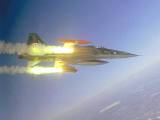 One of the
first use of the CRV-7 was at a weapon's competition in France. The aim of the competition
was to hit a tower with rockets equipped with practice warhead so the tower would not be
destroyed by a direct impact. At that time the CRV-7 was new and untried my most canadian
pilots. When the pilot fired his CRV-7 at the tower, the rocket impacted the tower,
exploded and destroyed the tower. Thus the Canadians were disqualified for using an
explosive warhead instead of a practice one. The fact of the matter was that since the
pilot was not aware of the increased stand-off range, he used the same as the MK 4series
rocket which was way too close and when the rocket impacted the tower the propellant was
still burning. the chock of impact shattered what was left of the propellant, which
increased the area of combustion, the amount of gas being produced, the gas pressure and
the speed of combustion which ended in a violent deflagration which destroyed the tower.
One of the
first use of the CRV-7 was at a weapon's competition in France. The aim of the competition
was to hit a tower with rockets equipped with practice warhead so the tower would not be
destroyed by a direct impact. At that time the CRV-7 was new and untried my most canadian
pilots. When the pilot fired his CRV-7 at the tower, the rocket impacted the tower,
exploded and destroyed the tower. Thus the Canadians were disqualified for using an
explosive warhead instead of a practice one. The fact of the matter was that since the
pilot was not aware of the increased stand-off range, he used the same as the MK 4series
rocket which was way too close and when the rocket impacted the tower the propellant was
still burning. the chock of impact shattered what was left of the propellant, which
increased the area of combustion, the amount of gas being produced, the gas pressure and
the speed of combustion which ended in a violent deflagration which destroyed the tower.
Presently many countries are using the CRV-7 including but not excluded to Canada, Australia and New Zealand.
Some of the rocket warheads used by the CAF are the WTU-5001/B Practice.
The WTU-5001/B Practice Warhead is manufactured in Canada.
It is a 10 lb warhead which is used for training of pilots and it sutbstitues the
10 lb explosive filled rocket warhead. The warhead consists of an 8 lb stoft steel
rod encased in a nylon/glass fibre shell.
is manufactured in Canada.
It is a 10 lb warhead which is used for training of pilots and it sutbstitues the
10 lb explosive filled rocket warhead. The warhead consists of an 8 lb stoft steel
rod encased in a nylon/glass fibre shell.
If you have any questions on the CRV-7 rockets, send me an email and I'll see what I can do......
Copyright© 1997 F. Martel. All rights reserved
http://gunplumbers.org/crv7.html
Last updated: 27 March 2008
Comments or suggestions: Webmaster